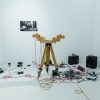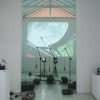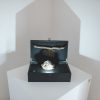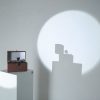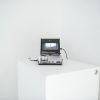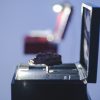(Translated from the original published at Sonic Field in Spanish)
To ask about the borders between science, art and speculation is ambiguous. Although the categories that we have created over the years have forced us to separate the disciplines and then talk about their interrelation, there were once forms of them that did not necessarily were understood separately, actually in many cases, they could not even have different names. Alchemy is an example of this, presented as science, art and path of transcendence. But it can also be shamanism, which incorporates its own mechanics, its technologies and vehicles, its forms of crafts and its own ways of research. In general, if we are flexible with the issue of conceptualization, beyond positivism and the idea of fine arts understood from the rigor of tradition, we can find an infinity of connections between the technical and poetic processes that can lead us to crosspollinate, merge, transgress and, why not, establish points of exchange; or perhaps get rid of borders, art least for a moment of listening, thus revealing routes between those spheres that are still open to the visionary and are capable of preserving their own idea of experimentation.
It is in this hermetic and multiform sense from which the work of the Colombian Jorge Barco, based in Medellín city and dedicated to exploring a variety of facets of the noise of materiality and vice versa, seems to be suggested, building his own worldview between machines, plants, voices, rumors, rumblings, underground and sidereal rocks, speculation and transcendence, technique and reflection; a deep search between the human and the non-human, in which the artist acts as a medium, traveling below or outside the earth’s surface in order to investigate physical forces and ethereal signals of any time such as unexpected crossings between memory and premonition. His work is marked by a constant spatiotemporal dilation in the mexploration of the scales that delimit the micro and macro cosmos, going through different practices with a constant question regarding the movement of apparently still and solid forms ─such as a rock─ and the static and concrete of what looks temporary ─such as waves or phonons─ often integrating questions about consciousness and the universe, the historical and what is outside the narrative: the speculative gap.
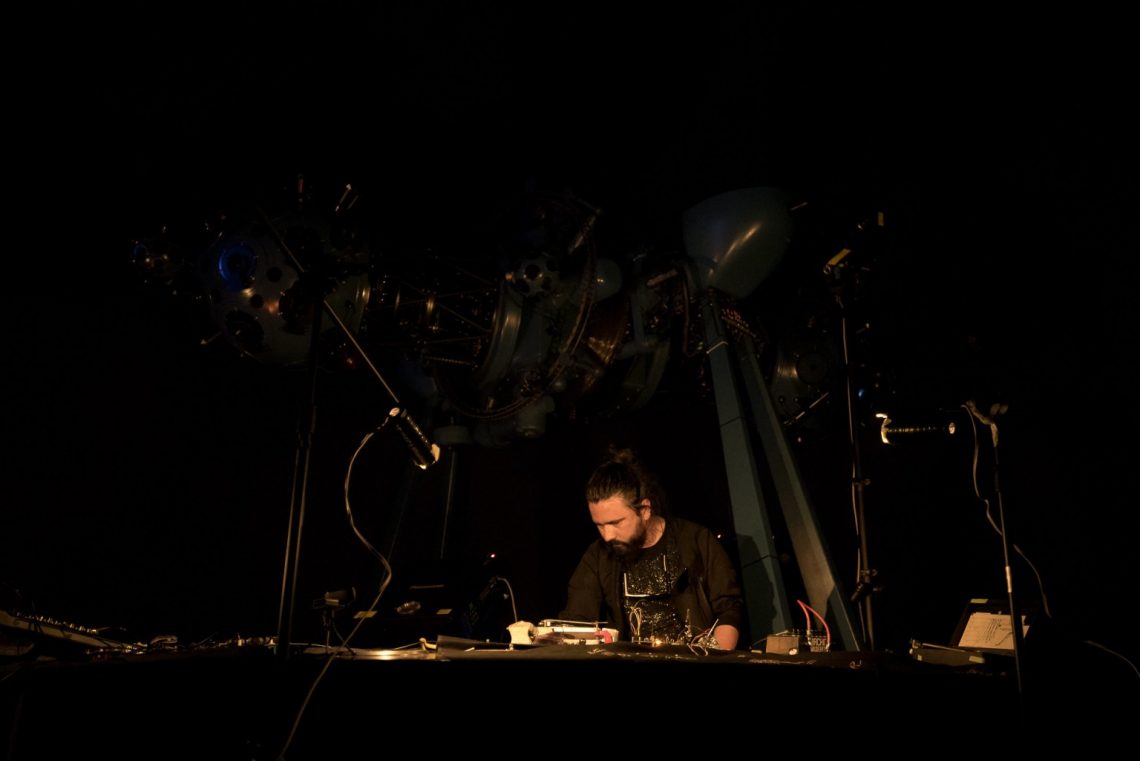
Most of his creations are related to noise, which in his work is understood in a multiplicity of processes and routes that encompass the aesthetic, the ontological, the speculative and the critical; dimensions that often dialogue and merge in his sculptures, compositions, performances and installations, positining him as one who searches among various expressions of energy and matter, both the underground and telluric manifestations, as well as the celestial and ancient ones, thus being able to deal with both cables and the conduction of signals in a physical apparatus, and also the sensation and speculation of the mental and perceptual process. Barco’s work is in this sense a plastic expression of a mestizo-futuristic sonic fiction, both because of his adherence to mixed questions in his work disciplines, as because his constant reference to the future that is revealed in ancestrality. His idea of shamanism is constantly transferred to the technologies of number and circuit, proposing a constant journey through listening as a spiritual, cosmological and geological device, not limited to the ear and expanded beyond the cochlea through a sort of psychophysical archeology, which is assumed from the experimental luthery as a space suitable for experimenting with light, sound, electromagnetism and manipulation of material figures. This allows Barco’s explorations to integrate multiple sonic matter processing methodologies in various directions, arranging different senses towards the sonorous and vice versa: sound as an epistemological source and things as references to sounds, in this case achieved through a mixture of circuit bending, handmade electronic instruments, sculpture, manipulation of found objects, conceptual experimentation, among other methods in charge of revealing a vast universe in which the noise seems as typical of mysticism as of science fiction.
Barco’s work has been exhibited in various galleries and festivals, such as the Casa Hoffman gallery with his work Primitivo in 2019, Ciber Era at ARTBO 2019, exhibition at the Panama Art Museum in 2018 with his works Strata, Roca, Polvo de Estrellas, exhibition at the Voltaje festival in Bogotá, among others, in addition to its live acts on platforms and festivals such as the RTVC National Meeting of Sound Archives and Archives in Medellín in 2019 and the Bogotá Noise and Politics Festival in Plataforma in 2019. Barco is also a curator of special projects at the Museum of Modern Art in Medellín, where he has carried out an outstanding work in the curatorship of LAB3, a unique exhibition space in the region, dedicated exclusively to sound and intermediate arts, a place that since his launch in 2015 has served as an exhibition space for a wide variety of artists and perspectives, such as Alba Fernanda Triana, Lucrecia Dalt, Francisco López, Leonel Vásquez, Carlos Gomez, among others.
We interviewed Jorge about his work and specially regarding his most recent solo exhibition Materiales premonitorios (Premonitory Matter) at the La Balsa gallery in Medellín, Colombia, where he exhibited a compendium of various works that he has been developing in recent years.
Sonic Field: Hi Jorge. We could start by talking about your encounter with sound, and particularly how sound has been introduced into your life and work.
Jorge Barco: Since I was a kid I have had a sensitivity for visual and plastic arts, I used to paint and assemble wooden objects. At university, I also experimented with different media, between photography, video and assemblies. Already working in Museums, I get involved in projects that cross art, technology and sound, more in a manager and curator role. In 2012, I made my first approaches to circuit bending and exploration with analog synthesizers and DIY to produce sound. I must acknowledge the impulse given me by the Brazilian artist Cristiano Rosa (aka Panettone- sudamérica experimental), who during his stay in Medellín taught me some basics of creative electronics. That same year my daughter Eva was also born, along with her came a renewed strength to create, and experiment again. When I started building circuits, soldering, I was reunited with the plasticity that painting and assembling objects transmitted to me. With the difference that this time the objects sounded! I think there is a lot of magic in sound, listening, in the possibility of generating it yourself and the idea of building your own noise devices. At first it made an uncontrolled and chaotic noise from altered toys, and square wave oscillators, which were later taken another dimension; listening to the machines and making them available to a broader narrative, a kind of sonic fiction.
SF: In which ways are you interested in that “material culture of sound” that Andrés Burbano suggests in the curatorial text of your exhibition? In particular, what is the role that noise plays in your work, both sculptural and in performance? Do you consider any relationship or difference in the material assessment of noise according to these formats?
JB: The works in the Premonitory Materials exhibition evoke different themes, as if the machines with stones and meteorites were in there asdevices that invite us to imagine some of the noise of the universe; a piece of Galena or a meteorite spinning around and making contact with a piezoelectric microphone… Beyond the sound it produces, they are there to suggest that those stones should be heard, the same for the work that has a fragment of the Yagé vine (Banisteriopsis caapi), embroidery and other objects.
Improvising live sounds seeks to provoke the same thing: a ritual act to evoke these forces, for example calling the telluric with the power of low frequencies, the wind or the water with a soundscape already recorded, the inaudible with an electromagnetic sensor, cracking the strata with stones over a loudspeaker… There is a lot of fiction and alchemy both in my machines and installations and in performance. Regarding noise I would like to quote something I wrote recently for the program of a concert that we held last Christmas at a noise club in Lisbon called Desterro together with several friends, which we called Electromagnetic Rituals: “Beyond sonic forces with rough textures ─machines, disruption, improvisation, interference, failure, alteration of the senses, lack of control, the divergent, techno-shamanism, the short circuit, chance and its DIY aesthetics─, we make Noise because it generates pleasure and we conjure rituals with it; electromagnetism, geomagnetism, quantum and acoustic waves, resonating in the cosmos on physical and metaphysical scales.”
SF: In your works, a constant reflection of different levels of the materiality of objects is evident, not only advocating their physical conditions but also a recurrent metaphysical interest. Where does this come from and how has the dialogue between physics and metaphysics has influenced your creative process?
JB: The broad and transcendent questions motivate me and perhaps that is one of the main incentives to make art, in the creative process different materials and forms are found for experimenting and expressing myself, and in that point sound turns into plastic dimension, language and scenery.
I am going to allow myself to mention an idea of the artist Pauline Oliveros, who used the word Sonosphere in the late sixties; defining it as an atmosphere composed of different waves emanating from the center of the earth. A complete sweep of energies including electrical magnetism, electromagnetism, geomagnetism, quantum waves as well as acoustics, which in turn resonate with the personal, the interpersonal, the musical, the earth, and the cosmos on physical and metaphysical scales.
Douglas Kahn comments in a book on landmarks that in this Sonosphere, unlike the soundscape, there is no moral stigma creating a difference between the technological and the natural, as it goes much deeper; The Sonosphere is not just waves, it is also built by energy particles (phonons). Although in addition to being deeply poetic, it also raises the idea of a connected whole, which is in the stories of Amerindian mythology as well as in science.
SF: Related to the last question, there is the idea of encompassing several material layers in the process of creating with, to and from sound, this appearing in your work in several ways: by working with the sonic as sonic, or the sonic in both the result of solid things, the electromagnetic sonic, etc. Where and why does this material multi-dimensionality interest come from? Is it heading towards something in particular?
JB: The effort to give a certain materiality to something apparently ethereal like sound is a constant in my artistic work. From a certain angle my work seems to be a kind of plastic sound art; that is because of the physical format, to generate, house or represent the sound; in a box, a stone, an embroidery or a cassette. Material manipulation as a constant process of investigation, for example putting two or more materials into dialogue that usually would not come together to generate a new sound object. Finally, everything becomes sound, and the sound that the machines alone generate in turn activates other ideas and associations, which feed each other.
SF: In this multiplicity of layers of your work, the manipulation of electricity, electronic hacking and even light and video are found to be very powerful tools related to sound, while the work is also visually careful and suggestive, almost tactile … What role does electronics and visual elements play in your work? They complement, expand or contrast with the sound… How do you relate them?
JB: Many of the electronic components ─such as a ceramic resistor or an electrolytic capacitor─ essentially preserve the natural element with which they were created, in these cases land and water. So, I like to think that when soldering them and building a basic circuit what happens is an alchemical process with minerals, electricity and sound.
I am interested in the so-called electronic arts in a broad sense and this also involves light and image and, in a specific sense, their sonic possibilities. Technology provides tools to create, but at the same time what we call technology goes beyond the tool, since it brings together layers that have been formed from the beginnings of civilization to the present. The archeology of media and a posture of critical reflection on it is something that I have been interested in addressing. I defend the idea of art as an investigative process and a place of knowledge and recognition.
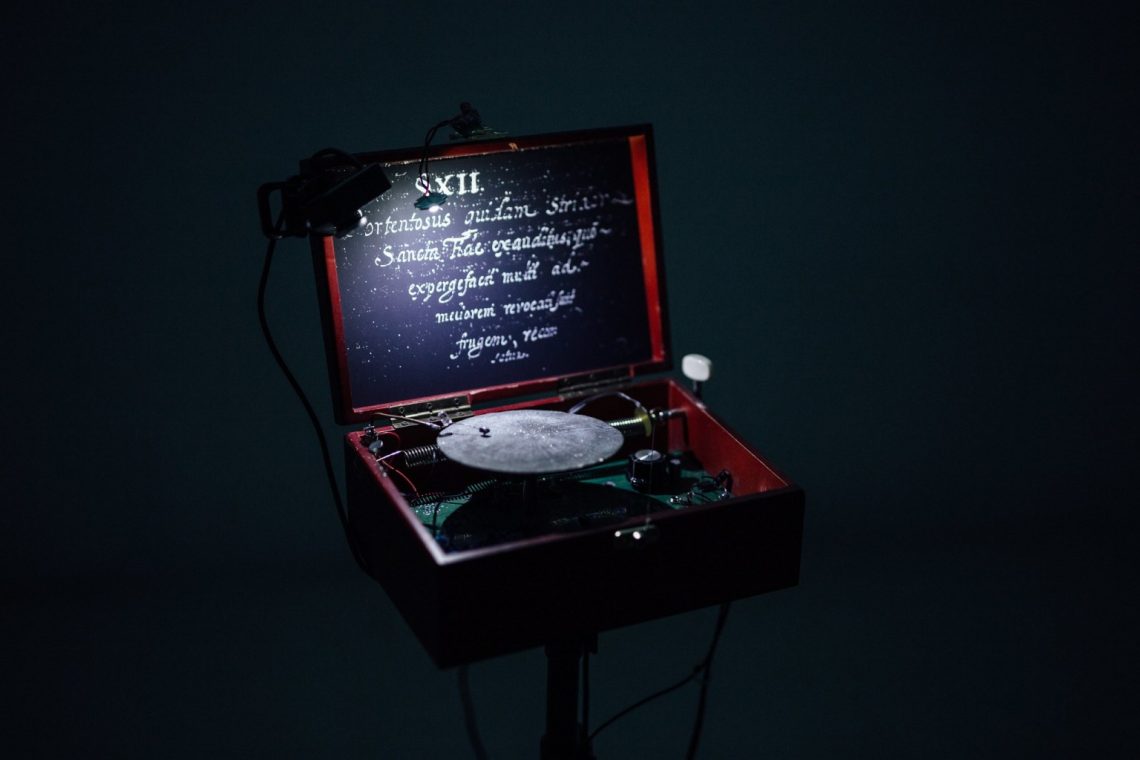
SF: What has the process of working with rocks been like? Not only in your works, but in your investigative process, the interest in these bodies is very present, that even when they seem static, you approach them on their vibratory architecture. In your works we can find meteorites, but also volcanic rocks, pyrite, galena, suggesting a sort of encounter between the extraterrestrial and the intraterrestrial, a constant dialogue between space and subsoil that you reflect by way of amplification, transduction, speculation. How is the sonic located in the middle of these forms and bodies? What have you found interesting in this process of sonically investigating rocks?
JB: When I was a kid I lived closely the activity of the Nevado del Ruiz Volcano until its eruption in 1985. It was very young, but I remember the constant tremors and sulfur rains, and the sand shaking of the avalanche at night. I think to some extent this marked me. A long time later, in a room in Mexico City, some fragments of metallic meteorites and pyrite suns came into my hands. By learning about the work of artist Ryan Jordan and his explorations with chalcopyrite and iron pyrite to make crude rock amplifiers, I was inspired to conduct mineral sonification experiments. With the invitation to be part of the Hall of Art and Technology –Voltaje-, in Bogotá in 2016, the idea of proposing an installation came up; and from there The Times of Noise is born, a project that takes as a reference the sound event that occurred in Bogotá in 1684. For this I used information from my research on the subject, based on chronicles that report the fall of this and other meteorites to earth.
SF: The consideration of the non-human in your work is very interesting, evident in the speculative tendency of the pieces and the idea of premonition, which in turn directs us also towards a human field, which I would dare to lead a more specific point: shamanic, visionary, hermetic, from references to figures such as Athanasius Kircher or crosses of Soviet science and metaphysics, to the voice of a shaman in one of the pieces and even the reference to the mysterious event of the Time of Noise in Bogotá you just mentioned. How is this encounter between the human from this alchemical and visionary process? How have dimensions like shamanism and alchemy influenced your work? Could one even speak of a spiritual intention in your work?
JB: Listening and sound are strategic places to address physical and metaphysical issues. In the humanities, for example, the interest in knowledge and ancient technologies have accompanied me since I studied my career in Social Sciences in Bogotá. Over time I have worked on some projects with sages from the Amazon in the city, especially Wuitotos; The contact with them, their rituality and medicine is something that has influenced me and has become part of my research interest. Machines have become only the tip of the iceberg, the visible side of a broader process, a sonic fiction, an ongoing experiment that asks about the sonic forces of the cosmos and also about the spiritual and mystical energy of life.
In 2019, at the Noise and Politics Festival organized by Plataforma Bogotá, I held a conference and a performance at the city’s planetarium under the same concept of electromagnetic rituals, in which I explored a sound narrative through three dimensions of the Andean worldview: The bottom realm, represented in the telluric forces, the strata and volcanic eruptions; the human one, as here, expressed in the soundscape and electromagnetism; and the realm above, in this case the sound of the stars and meteorites as they pass or impact the earth… that as a way of seeking to integrate the cosmic and geological origins of the universe.
The idea of The (alchemical) Art has been recurrent not as a discovery of a technical operation, but rather as the revelation of an existing process; Paraphrasing David Chaim Smith: “It would not be a matter of turning lead into gold; but the understanding that lead was always gold.” With geological materials it happens the same, they are matter; We are fascinated by meteorites, as the strange thing that comes from outside, from the cosmos, or by a fragment of volcanic lava that emerges from the bowels of the earth. However, any matter in this universe is already an object capable of generating sound and connecting us with spiritual quests. The alchemical or shamanic is related to what I consider, among others, to be the craft of art: pointing, directing the gaze and listening to something, in this case, it is something that can be experienced as part of a reality, which is presented as spiritual to me.
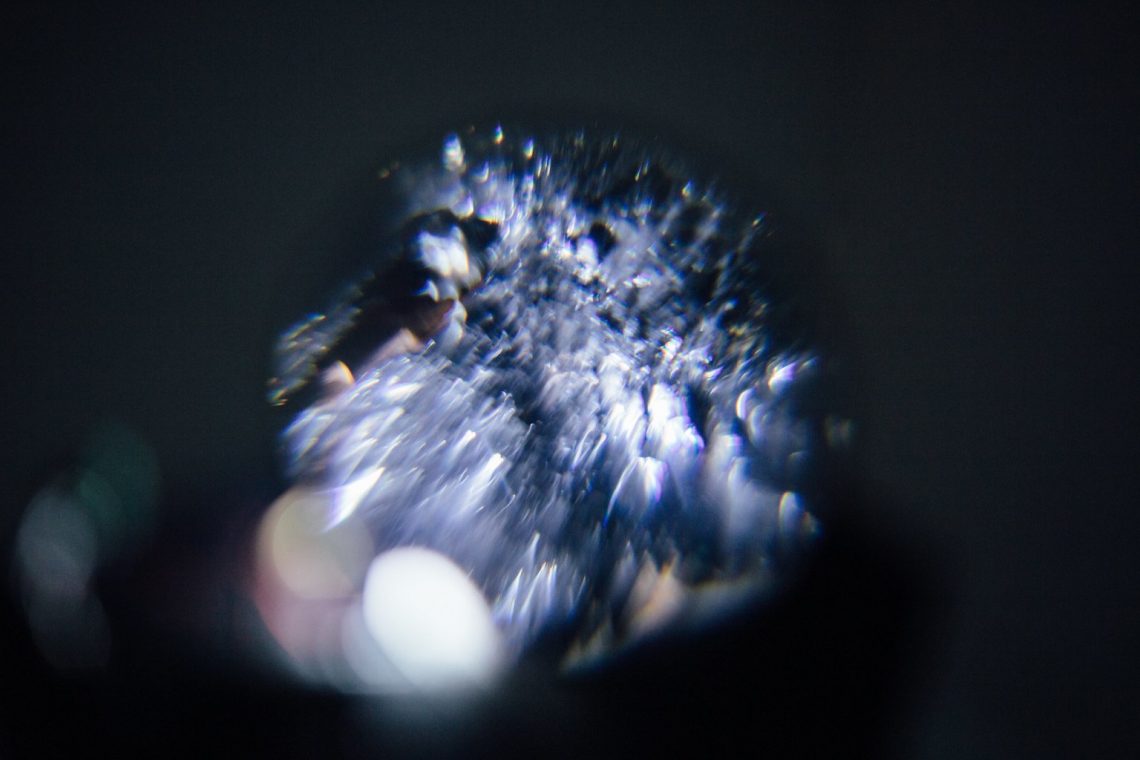
SF: Could you tell us about the creative process when creating a piece? How do you usually start and how are its different aspects ─conceptual, electronic, visual─ being integrated during the process?
JB: As an artist and curator I am in a permanent research process around sound and art. In my workshop/studio, three work fronts are combined: one has more to do with the construction of circuits, potentiometers, cables and soldering; Another is a sound studio, mixer, amplifiers, speakers to improvise with different sources, also to test what I am building. And the other front of work involves experimentation with stronger materials, drilling, assembling, painting, drawing, embroidery, etc.
The found object and the Ready Made has a lot to do with the objective development of my work. The objects come from various places, accompanied by different stories and energies. One of my devices could include a wooden box purchased from a Korean warehouse in Madrid, a piece of pyrite from a coal mine near Bogotá, and a watchmaker’s magnifier purchased from a miscellany in a town in a rural zone in Colombia.
My work in there consists of assembling and disassembling, constantly prototyping, playing with the elements. They themselves have their own characteristics that attract or repel and, most importantly, generate a vibration and sound. Each device is the result of intense research work, it aims to account ─through a sound-object─ a vision, an idea, a question and a fascination with materials and their aesthetics. Over time, one understands that making art is at the same time building an epistemology of art itself, a theory and a method of the matter, but also to know that despite everything, one finally has to go beyond logic and work with intuition.
SF: In sonic terms there is a clear reference to the idea of time scales, reflected in your pieces in terms of dynamics and contrast, but also in the way you approach micro and macro sound from the consideration of grain and detail, as well as the continuity and texture of noise. What is your process like in audible terms in this sense and how important are these dimensions of micro and macro when exploring sonic matter? Is there anything in particular that catches your attention in this regard?
JB: Another important part of my work is into sound files and the experimentation that is carried out on them. I like to create collections of sounds with archives of astronomical and geological observatories, records of natural sound phenomena, sound collages that are intervened by the works themselves. For example, for the Electromagnetic Rituals performance I used pre-built sounds over which I improvise live with synthesizers, an antenna and an electromagnetic sensor, conductive minerals and piezoelectricity. The work is inspired by the Inca worldview, a narrative made up of three moments: The Uku Pacha or the world below, is represented in the sound of boiling volcanic magaña, telluric movements and cracking of the underworld; the Kay Pacha or this current world, with the sound of rain, animals and plants, machines and lightning, extracted from the Voyager space probe disk, plus adding some recordings of electromagnetic signals; and the Hanan Pacha or the heavenly or super-terrestrial world above, and this one is narrated through the sound of a meteorite impacting the earth and continues with the records of gravitational waves, and interpretations of the sounds of outer space taken from the archives of NASA and the Alma project. All the sound pieces are crossed by 7.8 Hz, or the planet’s vibration frequency.
The micro and macro dimensions of the sound pieces that come to life through my works are permanently dialoguing in the multiple possibilities of sounds produced by materials, machines and sound files. I find the idea of time very present in my works, as expressed by Andrés Burbano, in the curatorial text of the exhibition Premonitory Materials, which I think is very interesting: “When thinking about the time scales summoned here, we realize that we are going to cosmic time, to the archaeological time and also to the immediate time of sound manipulation in real time, be it by electronic or analogous means.”
SF: How has the creation process been for a solo exhibition? What do you think of sound art within the gallery, and particularly in Premonitory Materials, how have you approached the process of locating the works in the gallery, how they relate, converge? Are they like a kind of joint composition or did you look more for a sort of arrangement?
JB: To present effective ways of exhibiting sound works of art; I think that is still a challenge for galleries, museums and other art spaces; Finding a “frame” for sound in the exhibition environment seems still somewhat difficult. Premonitory Materials at Galería la Balsa in Medellín has been my first solo exhibition. The year 2019 passed with this project in mind and many of the spaces in which I participated in this period helped shape the exhibition; for example, the Experimenta Sur residence organized by Mapa Teatro around the work of the scientist Humboldt was an exceptional space to nurture this idea of everything interconnected from science, electromagnetic storms and volcanoes. From there a first work emerged and was exhibited along with the works of the other participants in the Museum of the National University in Colombia. This work already contains many of the elements that the exhibition at La Balsa would later have. Another enriching experience to shape this exhibition was the project carried out at the Caldas da Rainha art and design school in Portugal, which was inspired by the research on wind harps by the Jesuit monk Athanasius Kircher.
A month before the opening of the exhibition I already had a script with the set of works that would make it up, some already done in previous years and others materialized between 2019 and early 2020. I think my experience of working in the field of museology allowed me to really enjoy the process, not only of creating work, but of designing an exhibition, because I think that finally is there where many gestures, sounds and individual objects make sense. An exhibition is a kind of meta-work, not only in the way of arranging objects in space but ─in this case─ of composing an atmosphere in five gallery spaces with sound objects. We enjoyed the process so much that even at home we played with the family, drawing to design each of the rooms inspired by the elements of nature.
JB: I think the exhibition is a good space to try to understand sounds; There is the individual sound of each object, and there is the sound that they configure together. Electromagnetism, shamanic songs, soundscapes, friction of stones and piezoelectricity, oscillators, sequencers, live sound and loops, and even strings in the sound sculpture in the courtyard of the Gallery. All these sounds interacting, generating an enveloping and changing atmosphere, in which low frequencies, alternate times, sequences, clicks are combined.
The aesthetics of the works, sought to promote atmospheres, through the play of light and shadows, phantasmagorical projections, which evoked space and a some sort of apocalyptic environment. The multiplicity of materials and media allowed for an intimate, close, visual and perceptual experience, which invited attendees to recognize themselves as part of the subject and generate their own fictions.
SF: Finally, in addition to the references mentioned in the curatorial text, could you share with us some names, works or events that inspired your process and / or you consider of interest for working with sound?
JB: Being aware of a connection with the environment and ecological issues in my research process has brought me closer to other references, for example the writer Douglas Khan and his understanding of our planet as a signal and sound emitter. Also, it is interesting, the notion of the Sonosphere proposed by the composer Pauline Oliveros in resonance with the shamanic perspective.
The projects that I have included in the programming of the Sound Experimentation Room LAB3 at the Modern Art Museum of Medellín as curator have addressed a variety of topics and concepts that seem important to me in sound art research today: acoustic ecology, cartography and soundscape, deep listening, electronic music, psychoacoustics, noise and hacker culture.
The exhibition also refers to the works of Athanasius Kircher expressed in his books on the underground world and universal music. There are also direct references to the composer Alexander Scriabin and the filmmaker Vladimir Kobrin and his work on the Present Continuous.
More about Jorge Barco on his website
Networks: Archive | Vimeo | Flickr | Twitter | Instagram | Bandcamp
About the Premonitory Materials exhibition (in Spanish):


